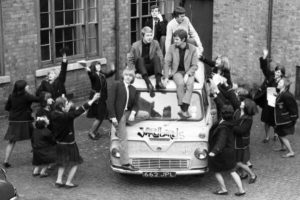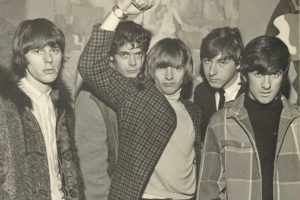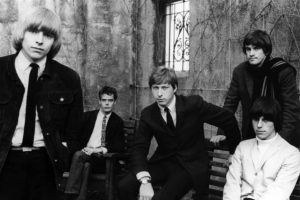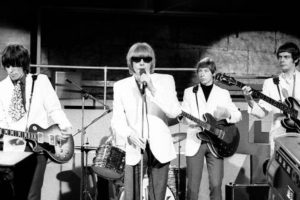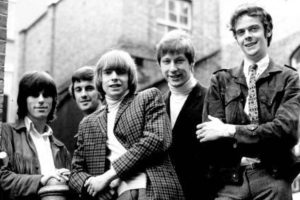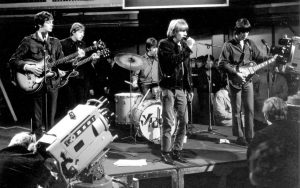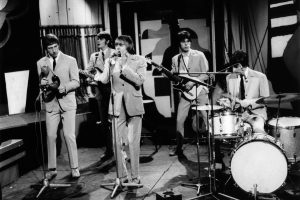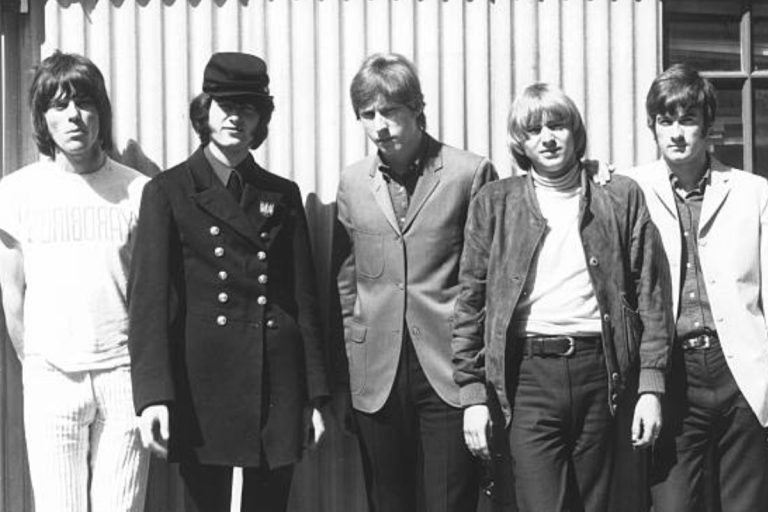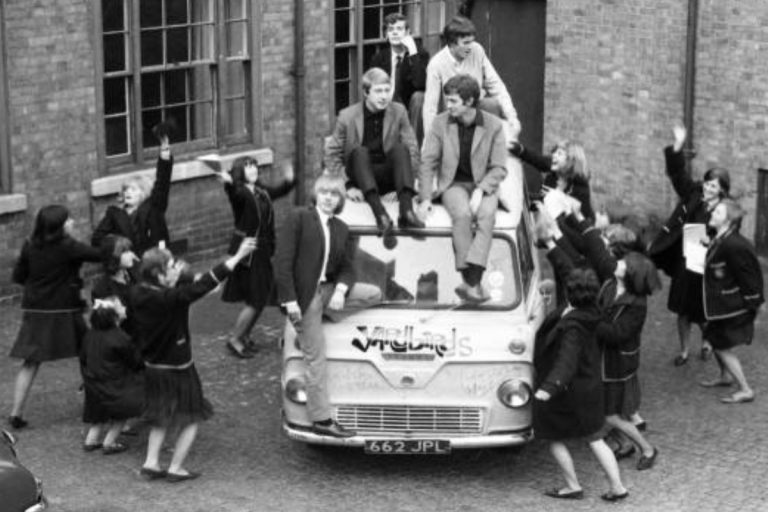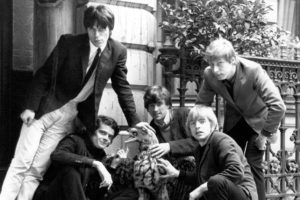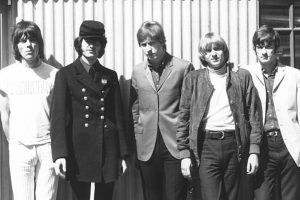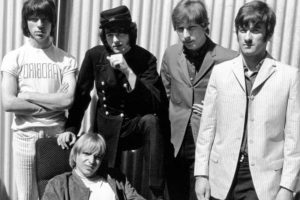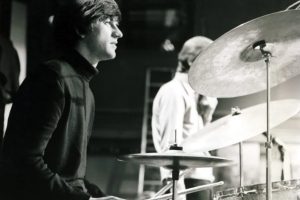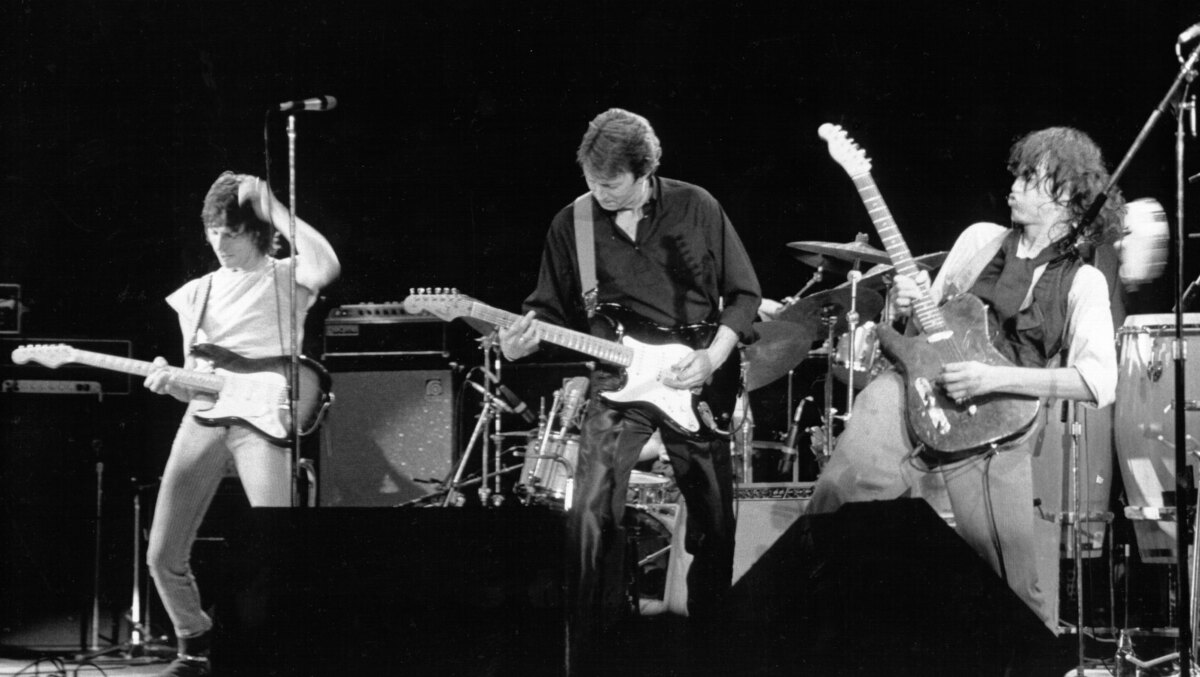
Three Titans in One Band
The Yardbirds stand as a unique phenomenon in rock history—not just for their groundbreaking music, but for serving as a launchpad for three of the greatest guitarists of all time: Eric Clapton, Jeff Beck, and Jimmy Page. It’s rare for a single band to host one legendary guitarist, let alone three, each of whom left an indelible mark on music history.
These guitarists didn’t just pass through The Yardbirds; they defined the band’s sound during their respective eras. Clapton’s blues purity, Beck’s experimental innovation, and Page’s commanding artistry each steered the band in unique directions, shaping not only The Yardbirds’ legacy but also the trajectory of modern rock. This article delves into their contributions, tracing the evolution of the band through the hands of these guitar icons.
Eric Clapton and the Blues Purist Era
In The Yardbirds’ formative years, Eric Clapton was the driving force behind their blues-drenched sound. Joining the band in 1963, Clapton brought a devotion to traditional Chicago blues, drawing inspiration from legends like Muddy Waters, Howlin’ Wolf, and Freddie King. His fiery yet precise guitar work became the hallmark of The Yardbirds’ early style, as they built their reputation playing clubs across London’s vibrant blues scene.
Clapton’s contributions shine on tracks like “Good Morning Little Schoolgirl,” where his clean, emotive solos breathe new life into a classic blues tune. His performance on “Smokestack Lightning” captures the raw intensity of live blues, blending soulful bends with a relentless rhythmic drive. These recordings showcased his deep reverence for the genre and positioned The Yardbirds as one of Britain’s premier blues bands.
However, Clapton’s tenure with the band was short-lived. In 1965, as The Yardbirds began exploring a more commercial direction with the release of “For Your Love,” Clapton grew disillusioned. The song’s harpsichord-driven arrangement marked a departure from their blues roots, a shift Clapton found incompatible with his artistic vision. Feeling that the band was straying from authentic blues, he left, joining John Mayall’s Bluesbreakers soon after.
Clapton’s era with The Yardbirds remains a defining chapter in the band’s history, grounding their music in the blues tradition and setting the stage for the innovative paths they would later explore.
Jeff Beck’s Experimental Phase
After Clapton’s departure, The Yardbirds underwent a significant transformation with the arrival of Jeff Beck in 1965. Known for his daring approach to the guitar, Beck introduced a level of experimentation that propelled the band into uncharted territory. His tenure marked a shift from pure blues to a more avant-garde, psychedelic sound, making his era a turning point in the band’s evolution.
One of Beck’s most iconic contributions is “Heart Full of Soul,” where his guitar mimics the sound of a sitar, introducing Eastern influences into rock music. This track not only broadened The Yardbirds’ sonic palette but also helped pioneer the psychedelic movement that would define the late 1960s.
Another standout is “Shapes of Things,” a song often hailed as one of the first true psychedelic rock tracks. Beck’s innovative use of feedback, distortion, and sustain created a soundscape that was as bold as it was groundbreaking. His ability to blend technical prowess with emotional expression made his guitar work both captivating and influential.
Beck’s experimental techniques extended beyond individual songs. His approach to the instrument—treating it as a tool for sonic exploration—redefined the role of the guitar in rock music. Under his influence, The Yardbirds became a band that was no longer just playing music; they were creating art. Beck’s era cemented their reputation as pioneers, pushing the boundaries of what rock could be.
Jimmy Page and the Transition to Led Zeppelin
In 1966, The Yardbirds welcomed Jimmy Page, who initially joined as a bassist before transitioning to lead guitar alongside Beck. After Beck’s departure later that year, Page took full control of the band’s direction, steering them toward a heavier, more dynamic sound. His era with The Yardbirds laid the groundwork for what would become one of rock’s greatest legacies.
Page’s contributions are perhaps best exemplified by “Happenings Ten Years Time Ago,” a complex, multi-layered track that showcases his technical brilliance and innovative spirit. Featuring dual guitar parts and a surreal atmosphere, the song embodies the adventurous ethos of The Yardbirds’ later period.
Beyond individual tracks, Page’s influence on the band extended to their live performances, where his intricate solos and commanding stage presence became a highlight. During his tenure, The Yardbirds began incorporating heavier, more intricate arrangements that hinted at the sound Page would later develop with Led Zeppelin.
When The Yardbirds disbanded in 1968, Page was tasked with fulfilling the band’s remaining tour commitments. He recruited a new lineup of musicians—Robert Plant, John Bonham, and John Paul Jones—and initially performed under the name “The New Yardbirds.” This lineup would soon evolve into Led Zeppelin, a band that took the foundation laid by The Yardbirds and transformed it into a phenomenon that redefined rock music.
Page’s time with The Yardbirds was not just a prelude to Led Zeppelin; it was a critical period of growth and experimentation that showcased his vision as a guitarist and bandleader.
The Collective Legacy of Three Guitar Legends
Eric Clapton, Jeff Beck, and Jimmy Page each brought a distinct style and perspective to The Yardbirds, shaping the band’s sound in ways that continue to influence music today. Clapton’s blues purity gave the band its roots, Beck’s experimentation propelled them into the avant-garde, and Page’s leadership set the stage for the birth of Led Zeppelin. Together, they represent a rare convergence of talent, innovation, and artistry within a single band.
The impact of these guitarists extends far beyond The Yardbirds. Their work influenced countless musicians, from Jimi Hendrix and Eric Johnson to contemporary rock and blues artists. The techniques they pioneered—whether Clapton’s emotive solos, Beck’s use of feedback, or Page’s layered arrangements—remain integral to the evolution of the guitar as an instrument.
For fans of rock and blues, revisiting The Yardbirds’ catalog offers a unique opportunity to witness the genesis of modern music. Through the artistry of Clapton, Beck, and Page, The Yardbirds became more than a band; they became a legend.
